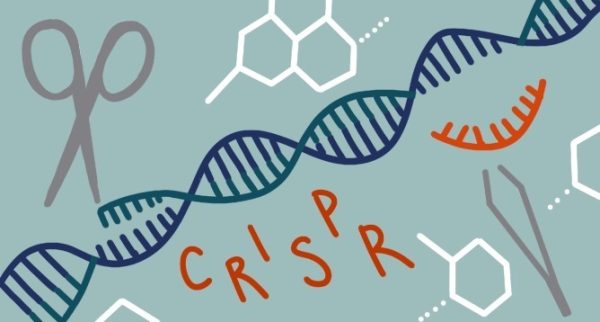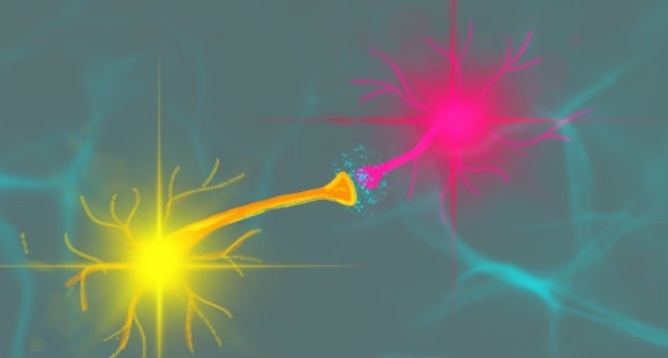A researcher highlighted gene editing and its therapeutic applications in a talk April 18.
Raj Chari, director of the Genome Modification Core Laboratory at the Frederick National Laboratory for Cancer Research, an organization that provides gene editing resources, shared his research in a talk titled “Harnessing Genome Editing Technologies to Elucidate Cancer Biology.” This lecture was part of the Georgetown University Medical Center’s Distinguished Scientist Seminar Series, which invites researchers from around the country to share their expertise.
Genome editing is the process that allows scientists to change an organism’s DNA, including changing or cutting out sections of genetic code. Scientists adapted the CRISPR-Cas9 system, the most common genome editing system, from bacteria that use gene editing to defend themselves against viruses using a group of DNA segments collectively known as CRISPR to recognize certain sequences in the virus’ genetic code. Once they identify this viral DNA sequence, an RNA sequence called a guide RNA will help Cas9, a specialized enzyme, navigate to the site where it must cleave the virus’ DNA.
Chari said the discovery of CRISPR-Cas9 revolutionized gene editing.
“The whole excitement of this field came with the finding that, number one, it was really easy to generate guide RNA to target any location in the genome, and that the frequency of these double-stranded breaks and the ability to make breaks was just orders of magnitude better than anything we had prior,” Chari said during the event.
In late 2013, Chari’s lab aimed to determine which guide RNAs would help the Cas9 protein effectively cut DNA in a specific location.
“Now we started thinking about why certain guide RNAs were actually gonna work — why certain guide RNAs were going to cut and why others were not,” Chari said. “The question was, ‘Were there any sequence features that could tell us whether or not a particular guide RNA sequence would be effective?’”

However, these experiments require numerous data points, according to Chari. To address this need, Chari and his colleagues created dbGuide, a database of guide RNAs that researchers have used in the past for gene editing. This allows researchers to search for useful target cells and guide RNAs.
“We decided to build a small library that encompassed genes that would be considered of high value and, with my background in cancer, I figured we would use cancer genes, channels and receptors,” Chari said.
With this data, Chari was able to create a machine learning model that could help predict whether a proposed guide RNA sequence could successfully direct the Cas9 protein to the desired location. A researcher can input the sequence that they want to cut and the model will provide a potentially successful way to achieve this splicing.
In addition to using gene editing to cut DNA, scientists can also use gene editing to modify gene expression, the process through which proteins are made from genes, according to Chari.
“This whole CRISPR system is like a Swiss Army knife in the sense that you have all these different functionalities that you can take from a single Cas9 protein,” Chari said.
Luca Mostofi (CAS ’25), a Georgetown University student who attended the seminar, said the plethora of uses for gene editing fascinated him.
“I thought Chari’s research and the multitude of uses for gene editing was super impressive,” Mostofi told The Hoya. “It was amazing to see how researchers have adapted gene editing for a multitude of uses. I’ve never really heard of a lab technique that can be used in such a wide variety of fields.”
Chari also elaborated on his lab’s collaborations with the National Cancer Institute’s Center for Cancer Research, including using gene editing to degrade a specific protein and study the effect of its absence in nerve cells. Using this same technique, Chari even helped identify a novel protein, thymine DNA glycosylase (TDG), that helps repair damage to single strands of DNA.
“For some proteins, you could have a loss of above 50% of the protein expression within 6 hours,” Chari said. “So again, it was a really amazing way to be able to get at essential genes and the effects of depleting them.”
Chari said researchers also use gene editing to modify the expression of proteins that reside on the cell membrane, allowing researchers to study essential pathways of the immune system.
“Cell surface protein-protein interactions are important for cell-cell communication, signal transduction and immune responses,” Chari said. “Recently developed drugs have targeted cell surface proteins and binding partners.”
Mostofi also said that Chari’s seminar made him hopeful for future innovations.
“It was crazy to see how, in such a short period of time, so much advancement and application has happened in the gene editing research. I think that’s extremely encouraging,” Mostofi said. “I’d be interested to see what advancements there are in the near future.”








